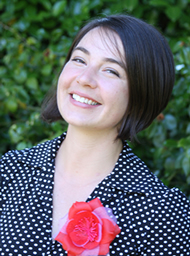Project and Water News
USU camp for teens who like to code on July 11
CI-WATER invites high school students to solve real-life code challenges at the Utah State University Summer Code Camp on July 11.
During this free, one-day event, participants will learn and practice computer coding, work in teams and compete in a fun coding challenge. CI-WATER project faculty and graduate students facilitating the event will be on hand to guide and answer questions.
A tour of USU’s high performance computing and data center is included.
More Information...May 21, 2013
Prizes, pizza and code: BYU to host camp June 11
CI-WATER invites high school students to sign up for the 2013 BYU Engineering Code Camp. This one-day program will help students learn how computer simulations are used to solve fascinating problems, including water resource planning and management.
The June 11 event will include a tour of the high-tech labs in BYU’s College of Engineering, workshops where attendees can write code and solve real-world problems, and games and contests featuring science and engineering. Pizza, treats and prizes will be included.
The BYU Code Camp introduces students to engineering and applied computer programming, and raises awareness of educational and career opportunities in these fields.
More Information...May 14, 2013
Applications due May 24 for undergraduate Summer Research Experience
CI-WATER is recruiting undergraduate students from Wyoming and Utah to participate in a month-long research opportunity at the University of Wyoming’s Laramie campus.
The Summer Research Experience for Undergraduates on High Performance Computing and Watershed Modeling will be held from June 17 through July 19 . Participants will gain instruction and research experience in collaboratively solving a complex, computational science problem.
Through a combination of hands-on experiences and lectures, students will learn how to operate in a team research culture, use programming techniques for high performance computing platforms and become familiar with the use of high performance computing in hydrological modeling. An optional one-week mini-course will be offered in July, focusing on the use of the Gridded Surface Subsurface Hydrologic Analysis (GSSHA) model and Watershed Modeling System (WMS). Experience with hydrologic modeling and numerical methods is not required.
Undergraduate students attending the University of Wyoming, Brigham Young University, Utah State University or the University of Utah or who are residents of Wyoming or Utah will be given preference. Out-of-state participants will be hosted at the University of Wyoming at no cost; stipends are available.
Apply online May 24th. Applications will be reviewed by May 30.
More Information...May 14, 2013
The Visualization of Big Data
 How exactly do our water systems work? What factors affect water resources? How much water will be available in the future?
How exactly do our water systems work? What factors affect water resources? How much water will be available in the future?
These are all questions CI-WATER researchers are trying to answer, but to do so, they must sift through the massive amounts of data they have collected. This Big Data, which is difficult to analyze and sort, is important, but before it can be useful, it must first be understood.
This is where computer scientists like Dr. Miriah Meyer come in.
“I create interactive visualization tools to help scientists understand their data,” says Dr. Meyer, who will be presenting “Visualizing Data: Why an Interactive Picture is Worth 1,000 Numbers” on May 29th at the Natural History Museum of Utah at the Rio Tinto Center, in conjunction with the Second Annual CI-WATER Symposium.
Dr. Meyer’s talk will examine how interactive visualization systems support people working with Big Data and how these systems are an essential component in research today.
When creating a visualization tool, Dr. Meyer first studies the collaborator, the project and the need for the data. She determines where the tool will be useful, then matches the data type with the visual technique, or creates a new technique, if necessary. These visualization tools, in the form of charts and graphs, are more useful than lengthy spreadsheets, and help researches get a stronger grasp on the outcomes of their work.
While Dr. Meyer is not working directly on the CI-WATER project, her message on visualization tools is important to the project because it offers scientists new ways of interpreting research.
“Scientific data often has a large amount of complexity, so using visual channels helps create better representations,” Dr. Meyer says. “Prototypes of these tools often lead to new questions scientists have never asked.”
The May 29 presentations is free and open to the public but registration is required.
More information about Dr. Meyer’s work can be found at: http://www.cs.utah.edu/~miriah/.
More Information...






